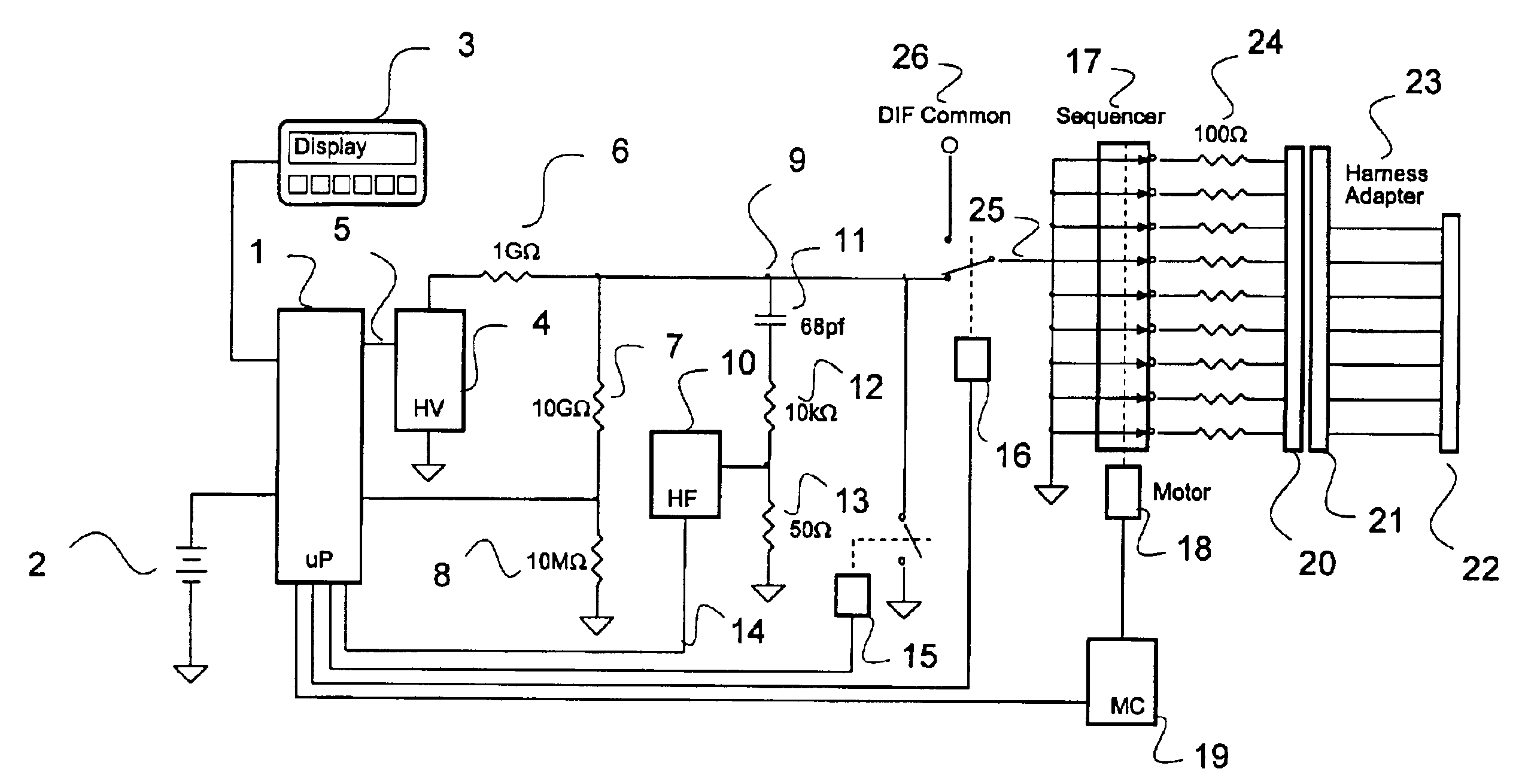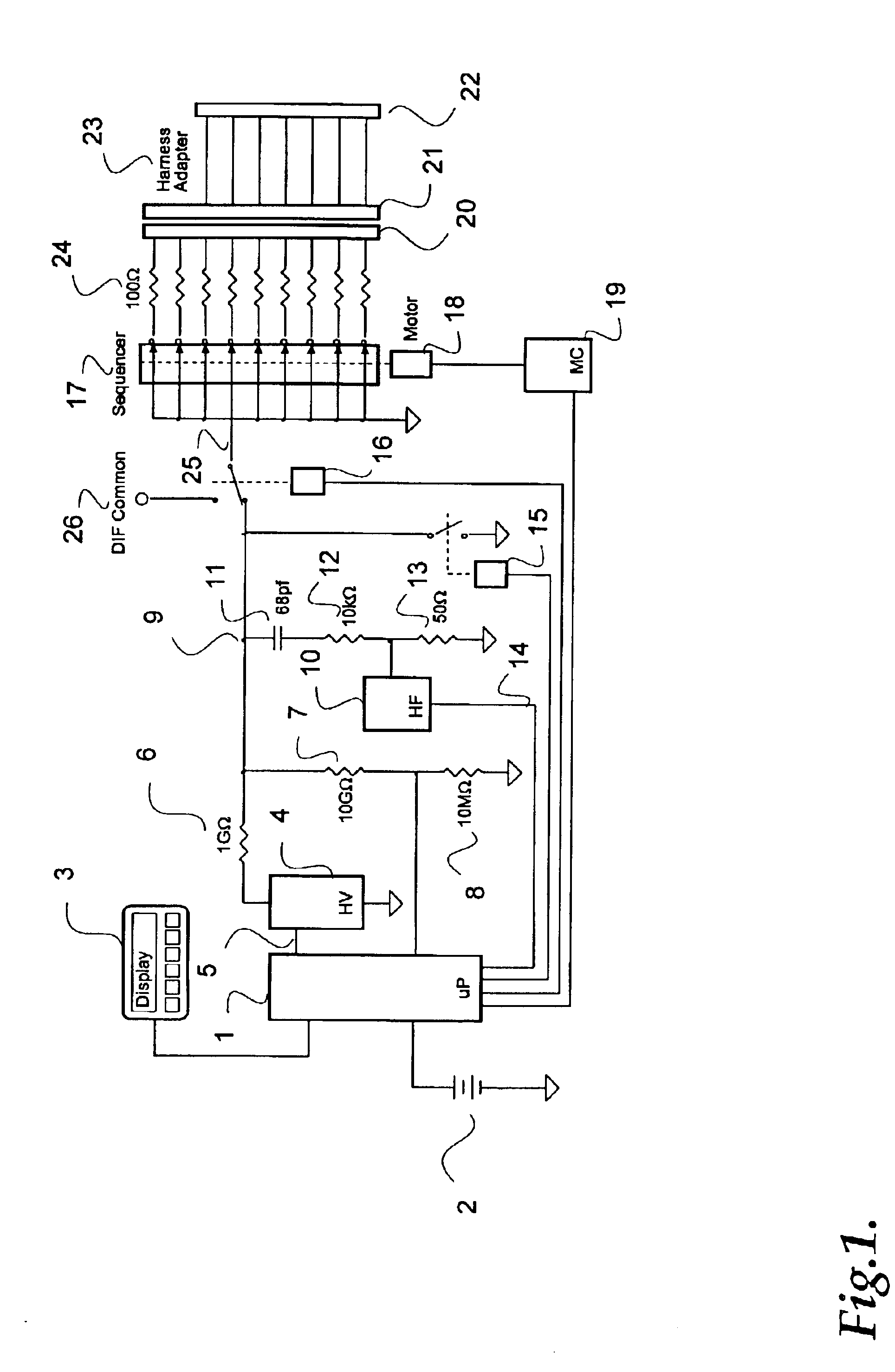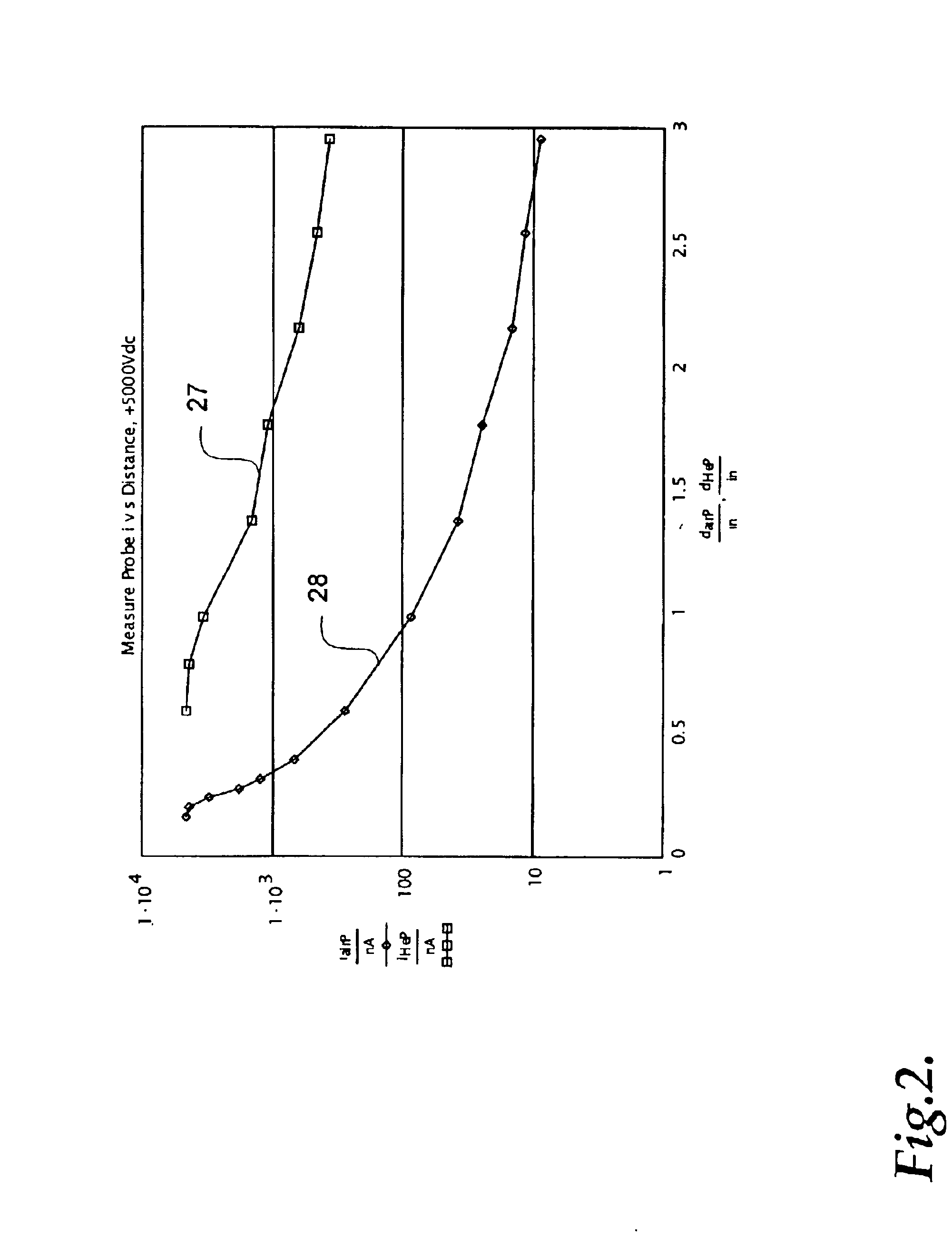Parallel insulation fault detection system
a technology of parallel insulation and detection system, which is applied in the direction of measurement leads/probes, line-transmission details, instruments, etc., can solve the problems of parallel faults that can develop substantially greater across separations, conductors inside wires being exposed, and parallel faults that may not be detected in time, so as to achieve less effective effect and mitigate the effect of problem
- Summary
- Abstract
- Description
- Claims
- Application Information
AI Technical Summary
Benefits of technology
Problems solved by technology
Method used
Image
Examples
Embodiment Construction
A schematic block diagram of the MED tool is shown in FIG. 1. The microprocessor subsystem 1 represents a control system that includes a microprocessor, interfaces and analog circuits. All of these are conventional implementations available to anyone skilled in the art. The entire system is powered by a rechargeable internal battery 2. The separate keyboard / display unit 3 conveniently connects to the unit with a serial RS232 link. An integral keyboard / display unit could also be used. A low-current high-voltage switching supply 4 produces a DC output voltage that is proportional to a control voltage 5 produced the microprocessor. In this manner, the microprocessor can set the high-voltage as required by the measurement. The maximum voltage should be on the order of 3000V to 6000V depending on the application. A variety of suitable high-voltage supplies are available from EMCO High Voltage Corporation, Sutter Creek, Calif. A high-valued resistor 6 limits the maximum current and makes ...
PUM
 Login to View More
Login to View More Abstract
Description
Claims
Application Information
 Login to View More
Login to View More - R&D
- Intellectual Property
- Life Sciences
- Materials
- Tech Scout
- Unparalleled Data Quality
- Higher Quality Content
- 60% Fewer Hallucinations
Browse by: Latest US Patents, China's latest patents, Technical Efficacy Thesaurus, Application Domain, Technology Topic, Popular Technical Reports.
© 2025 PatSnap. All rights reserved.Legal|Privacy policy|Modern Slavery Act Transparency Statement|Sitemap|About US| Contact US: help@patsnap.com



